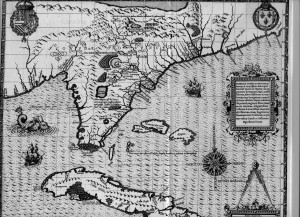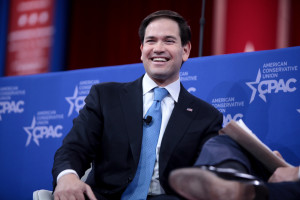As Election 2016 continues its long and strange voyage, Florida remains to be one of the most contended states out there. On the Republican ticket, Florida Senator Marco Rubio is the obvious candidate. But Ted Cruz has been recently targeting Florida voters with a smear campaign over the airwaves and then there’s Donald Trump who still might prove the improbable victor in yet another state. Critical to the outcome will be an endorsement former presidential candidate and Former Florida governor Jeb Bush. Although the two had it out towards the end of Bush’s campaign, and endorsement from Bush just might be the extra push that Rubio needs to stand above Cruz’s media punches.
Since Florida’s incorporation into the Union in 1845, the state has yet to see a candidate become president. I believe that this is partially due to the patchwork history of the state, which forces candidates to appeal to a wide breath of Florida voters while also maintaining credibility on the national scale. In this post, I am aware that I’m glossing over a lot of statistics and in-depth analysis. I know I’m tackling this from a more theoretical perspective, but it’s a theory that I believe is worth exploring.
Up until World War II, Florida was not only one of the smallest states (population-wise), it was also one of the poorest. It took a long time for Florida to join the Union and when it finally did, it had to find out how it fit into the larger nation.
First settled by Spanish conquistadors in the early 1500s, Florida was largely “owned” by the Spanish government. Until 1763, when Spain ceded the territory to Great Britain, Florida was a haven for a number of Africans and African Americans seeking freedom from slavery. Florida’s incorporation into the Union complicated this.
The state maintained its pioneer reputation into the 1800s as the US government, led by Andre Jackson, fought and then eventually removed the Native American population via the Indian Removal Act and several wars with the Seminoles.
Florida became a slave-dependent cotton plantation state, which made it no surprise when it ceded from the Union in 1861. The Civil War and the cotton-destroying boll weevil left the state desolate. It had a large African American population that was antagonized by a white population embittered by the war and the following economic destabilization. Many of these African Americans fled up north during the Great Migration around 1900.

Over the years, people have come to Florida for the Fountain of Youth, freedom from slavery, work, cheap-living, and Disney World.
The state went from Spanish-controlled territory, to Union-pioneer territory, to economically-destabilized territory. Clearly, Florida had a rough start.
Things turned around in the later 20th century. Florida maintained its agricultural cash crops (strawberries, sugarcane, citrus, tomatoes), but in the 1920s the state also saw a large bump in land development. This was tapered by a couple of devastating Hurricanes.
With the rise of air-conditioning and a growing awareness in affordable living, Florida received a bump during and post World War II. In the following years, Florida became not only a destination for Americans but also immigrants from Central America, Cuba, and Puerto Rico.
This patchwork history of peoples seems to me to be one of the greatest challenges to Floridians seeking to get elected. A Florida candidate has to appeal to a diverse population of peoples from radically different backgrounds, while also speaking to the greater nation as a whole.
In my next piece, I’m going to take a look at Florida presidential candidates throughout the years.
For more information on Florida History Check out A Short History of Florida and the Florida Memory Timeline

